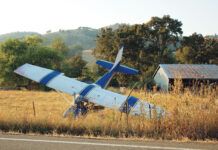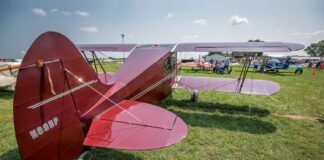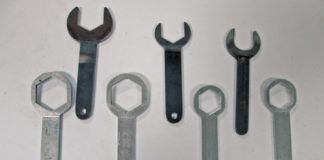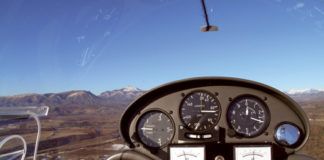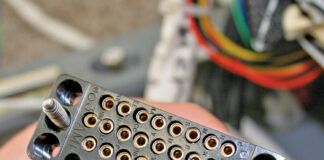Imagine, if you will, a pilot hangout in the 1920s. A young Army lieutenant is telling the story about how he recently took off and landed an airplane without once looking outside-completely blind. In fact, he had a hood covering his cockpit the entire flight, and the safety pilot in the other seat never touched the controls. The more experienced aviators in the room probably scoffed at the idea. Look, son, everyone knows that you cant fly in clouds-your senses get all mixed up, and you cant know for certain if you’re flying straight or not. You’re gonna get killed if you keep doing that!
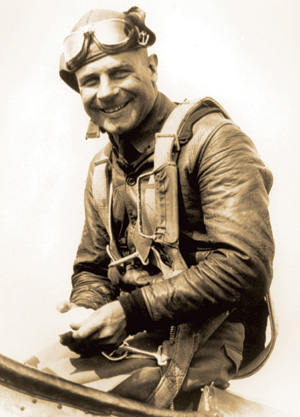
Well, sure, replies the young Lt. Doolittle. Our experience tells us that what you say is true, but we have a team that has developed new gyro instruments that show the attitude of the airplane. And the new radio beacon tells us when were on the beam for the airfield. The new precision altimeter can be trusted within a few tens of feet, so as long as you have good landing gear, it isn’t hard to make it all work. Times have changed, and you can fly in the clouds! Technology had advanced to address the particular (and real) dangers of trying to fly in clouds-and aviation had a new capability.
Transoceanic Flight
Fast-forward a few years. The world was aflame with war, and young Americans were flying twin-engine fighters long distances over the Pacific Ocean, sometimes running out of gas on missions of extreme range. An expert at long-range flying was brought in to show them techniques that were considered radical, but proved to extend the range of the piston-engine P-38 fighters by using low rpm and high manifold pressures (and probably running lean of peak as well). The experts scoffed once again, claiming the engines would be destroyed, and running that way couldn’t be more economical anyway. But it worked for Charles Lindbergh when he crossed the Atlantic, and it worked for the young fighter pilots who were somewhat in awe of this quiet man who joined them in combat missions, putting his own life on the line to show that his methods did, in fact, work.
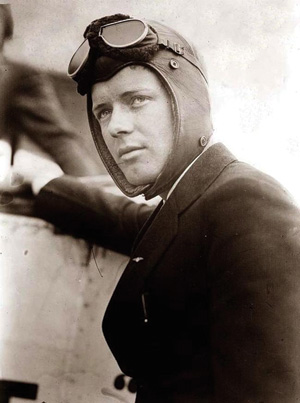
Only a couple of decades ago, transoceanic airline flight was conducted using four-engine (occasionally three-engine) jet transports such as the 707 or 747. It became apparent that with advances in aerodynamics and engine technology, twin-engine aircraft could do the job much more efficiently. Yet there was great hue and cry among the experienced cognoscenti. What the heck will you do when one of your two engines fails and you’re out over the middle of the Pacific? Heck, Ive had engine failures before, but I had three left-how are you going to survive with only one?
The folks flying the new jets responded that of course the potential for engine failure had been considered, and the airplane had been designed to operate all the way across the ocean on a single engine. The designers coordinated this with the licensing authorities, contingencies had been considered, and sure enough it was safe to fly this properly designed twin on such routes with paying passengers. Once again, technology had improved to address a previously recognized danger.
Myriad Options
Today, those of us in the Experimental homebuilt world have amazing choices when it comes to avionics and instruments. Electronic flight instrumentation systems (EFISes) have exploded onto the scene with a wide variety of capabilities. A cockpit that only a few short years ago was the exclusive domain of multi-million-dollar business jets is now available to anyone building a piston single that has $25,000 to spend. Airplanes are coming out of garages and workshops with redundant EFISes and autopilots capable of flying the airplane to minimums with the pilot doing nothing but feeding the dog. Properly designed, these systems offer far more redundancy than the certified piston singles that many of us flew in instrument conditions for decades.
When full-glass cockpits became practical for Experimentals not long ago, most of us built our panels with backup steam gauges because we weren’t sure that we could trust this new technology. Always ready to fall back on the old needle-ball-airspeed method of instrument flying, I elected to equip my first glass panel with an autopilot that had a control head with a display that provided a turn coordinator. I figured that if my EFIS failed, I could always rely on my skills with that instrument, just as I would have if the vacuum pump had failed in my old Grumman. But it didn’t take long (after the plane was flying and tested) for the light bulb to go on over my head as I realized it would be kind of silly for me to hand fly to the turn coordinator, because if it was working, the autopilot portion would probably be working as well. I might as well let George fly it while I navigated and communicated my way out of a mess.
The next step was to make the leap of faith into getting rid of the old needle and ball entirely, and this is where we once again break with tradition. I don’t know how you can think to trust that fancy electronic gizmo. All instrument pilots need to be able to fly with needle, ball and airspeed. Thats the way its always been done, and I wont fly without it!
Sound familiar? Yup-once again, we have to change our paradigm as new technology becomes a part of our world. Old lessons no longer apply in the way we thought, and a new way of looking at old problems becomes necessary. Let’s briefly explore the concept of redundancy for instrument flight.
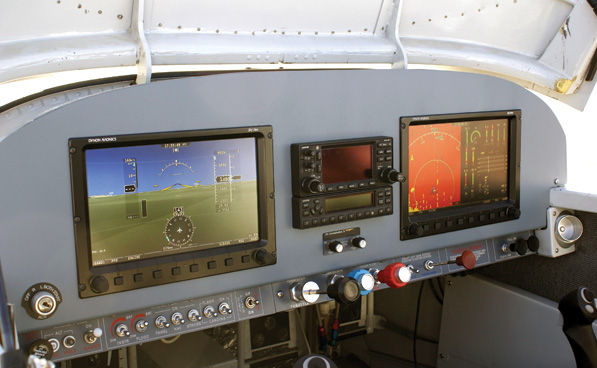
Where we’re headed: All glass, no steam-gauge backups. If this makes you squeamish, you haven’t been watching the development of aircraft avionics closely enough.
All Backed Up
For many years, we were dependent on a single vacuum pump to drive our primary flight gyros, and we backed that up with an electric turn-and-bank indicator. If one or the other system failed, we had a way to get home. If the second system failed, we were finished. That made us single-fault tolerant from an operational standpoint. We could sustain a single failure (never mind that single engine up front-that operates as a matter of faith) and still stay alive. Because of the standards of the day, the only reliable backup we had was the old T&B, so that is what was drilled into everyones mind, and it’s what we practiced with. We prided ourselves on being able to fly with the backup instruments in any kind of weather and turbulent conditions. We measured instrument pilots skill by how well they could do it the hard way. In fact, flying needle-ball-airspeed never was supposed to be an end in itself. Instead, it was a means to an end-the end being a safe flight after a primary system failure. Thats what we are looking for, not how it is accomplished.
Enter the EFIS
So lets take a modern glass cockpit. If you have a single EFIS, an autopilot capable of functioning without the EFIS, and redundant power (so that one failure cant take them both out), you are right where you were with the old steam-gauge cockpit. Fail one system, and the other can keep you level. Because the EFIS provides not only attitude information but also airspeed and altitude-both of which are essential to safe completion of the flight-you probably need backups for those. With that equipment, you have the same level of safety as you did flying that Cessna around in the 1980s.
With a dual-redundant EFIS (dual displays, dual air data and attitude sensors) and an autopilot, you can think about doing away with the extra airspeed and altitude as well-and still have the same level of redundancy. However, putting all of your eggs in one basket (integrated autopilot/EFIS) without additional separate attitude and air data redundant capability doesn’t, unfortunately, match the failure tolerance of the old systems, and you probably want to have some backup attitude sources.
Fault tolerance-the ability to sustain failures and continue operating-is what we have always worked on providing, even when we didn’t call it that. Simple, certified piston singles provided single-fault tolerance, with the backup being the pilots skill at flying with less than ideal equipment. The mindset of many pilots is still that you need to be able to demonstrate traditional partial-panel skills to be a safe instrument pilot, when what you really need to be able to do is demonstrate a way of flying safely with a given number of failures. I am amused at the story of one pilot taking an instrument checkride in her EFIS-equipped Experimental. When the examiner covered up one EFIS screen, she simply brought up the PFD on another. When he covered that one up, she turned to her backup ADI/autopilot. Essentially, the statement was, We can keep doing this all day-how many failures am I expected to fly with? There was no T&B in the airplane, but she didn’t need to demonstrate those skills-she simply needed to be able to fly with a failure of the primary attitude instruments.
Total Failure Is Not an Option
What is important, then, when talking about instrument flight capability, is not the specific equipment you have, but your fault tolerance-how many failures you can sustain and still complete the mission. There is nothing wrong with continuing to rely on the old T&B if that is what you choose to do, but it is no longer necessary. However, this does bring up an important point about pilot proficiency and knowing ones limitations. While I now regularly fly an airplane with a complete dual EFIS, triple power, quad GPS and an autopilot that will do everything but make toast, I am not about to claim that I could immediately go fly IFR in a steam-gauge airplane without some significant brush-up. Frankly, my traditional partial-panel skills are not current, and I recognize that as a limitation-just as I know that if I am going to fly a sailplane, I probably need to take a couple of tows with an instructor since I haven’t used my rating for a year. You have to make sure that you are current to handle unexpected failures in the equipment that you are flying to be safe for any given flight.
Change Is Good
Change is a continuous thing in aviation. While it might be hard to see the advancements in certified single-engine airplanes in the past 30 years, the advancements in Experimental avionics and systems in just the past five have been tremendous. In the early decades of aviation, new ideas and new airplanes sprouted like weeds-but even then pilots were reluctant to part with the lessons they had learned for the new ideas represented in the latest designs. And that is appropriate. We are talking about an activity that is unforgiving and can rapidly turn fatal if we do not exercise the utmost caution, so changes from the established norm demand intelligent and thorough scrutiny. But once they have been scrutinized and proven to be valid, we need to embrace these new ideas so that we can enjoy their benefits and move on to discovering the next major advance.
Where would we be if Jimmy Doolittle hadn’t pioneered instrument flight? Where would we be if Lindbergh hadn’t proven that you can keep an engine running continuously for more than a few hours? Where would we be if the thousands of advances in aviation hadn’t been made (and accepted) over the years? Todays advance capabilities are here because pilots have been willing to challenge conventional wisdom and examine new ideas. Aviation is, and always has been, about moving forward, and we should never be afraid to look for ways to make it safer and more efficient. Although airframe and engine technology may seem to have plateaued for now, avionics capability has been growing by leaps and bounds. All we need to do is adapt our old assumptions to reap the benefits.








